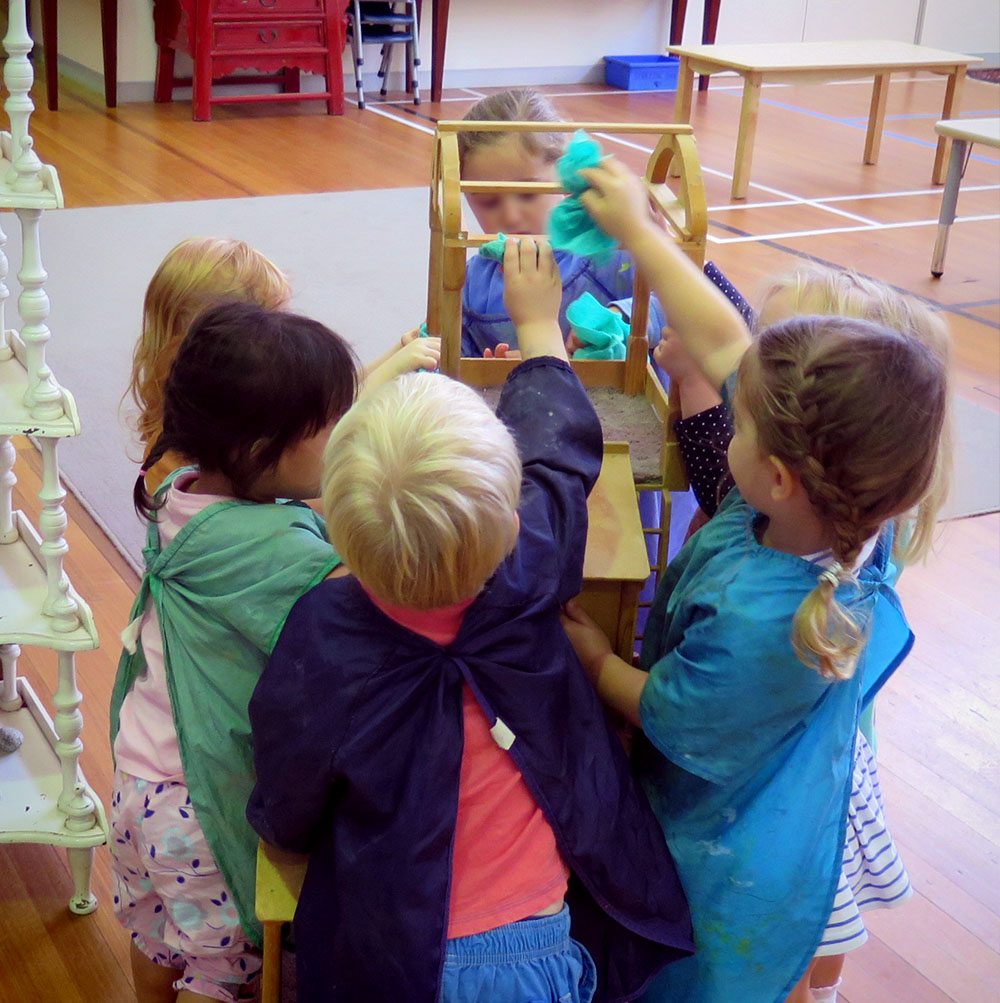Resilience is the ability to successfully manage the bumps and bruises of life, to successfully manage the things that can hurt physically, emotionally and psychologically. -Maggie Dent 1
While children have many natural abilities and strengths, they need help and support to build resilience.
Here are some of the ways SOEL educators help children to build resilience.
- Being a reliable caring adult, rather than expecting children to manage everything alone. We help children to recognise what hurts and to manage the stress that has been caused.
- Building connections with people who care about them. We encourage children to share their successes with other children, educators and their families.
- Encouraging children to ask for help. We give children opportunities to do things themselves but encourage them to ask for help when they need it.
- Building executive functioning. Executive functioning is made up of the thinking skills that enable children to understand and articulate their thoughts and feelings, plan a way to achieve goals, initiate, maintain attention and effort, manage materials and activities, recall and retain information, get things done effectively and efficiently, think and respond quickly, persist, adapt to change and reflect. We support children’s resilience when we establish routines, model healthy social behaviour, create and maintain supportive reliable relationships around them, providing opportunities for their own social connections, encourage creative play, play simple board, ball or memory games, give them opportunities to think and act independently and provide opportunities for them to make their own decisions.
- Encouraging mindfulness. Mindfulness enables us to make reasonable decisions. We help children to notice their breathing, their body and the world around them and to calm their mind and body so that they can think more clearly.
- Creating opportunities for physical exercise. Exercise brings oxygen into the brain which calms the brain in times of stress. We help children to be physically active: to move, dance, run, go on a treasure hunt, negotiate an obstacle course, play with balls and engage in cooperative and competitive games.
- Nurturing the feeling that they can do hard things. We acknowledge children’s strengths, the brave things they do, their effort when they do something difficult and encourage them to make their own decisions.
- Nurturing optimism. Optimism is one of the key characteristics of resilient people. We acknowledge the disappointments and support children to make the most of the situation they are in.
- Modelling resiliency. Children want to be like the people they love. We let children see how we deal with sadness, stuckness and disappointment.
- Supporting them when they are afraid. When something is scary or difficult, people usually have one of two reactions: fight or flight. We help children to see there is a third response; to edge them gently and safely towards the things that challenge them.
- Encouraging children to take safe, considered risks. Children need to learn where their edges are, to think about their decisions, and to cope with the things that go wrong. We provide possibilities for age appropriate risk and support children to reflect on their experiences to prepare them for the next time.
- Not rushing to their rescue. We provide opportunities for children to manage stresses and challenges while drawing strength from us as place of safety.
- Meeting them where they are. There is no hurry for resilience to be built. All of us experience emotional pain, setback, grief and sadness sometimes.Feelings always have a good reason for being there. We help children to respect their feelings but not let them take over.
- Nurturing a growth mindset. A growth mindset is the belief that people have the potential to change. We help children believe that people can change.
- Letting them know that we trust their capacity to cope. What we think matters. We are the ones children look to as a gauge for how they’re going. We show the children that we believe they can cope with their stumbles and tumbles.
- Building children’s problem-solving toolbox. Self-talk is an important part of problem-solving.We give children the language to solve their own problems. “What would [someone who they see as capable] do?” “What has worked before?” “What shall we do first?”
- Making time for creativity and play. Problem-solving is a creative process. We give children the space, time and resources to play.
- Letting them talk, being a sounding board, rather than solving problems for them. We provide a safe place for children to experiment and try new things and encourage them to come up with their own solutions.
- Asking ‘how’, not ‘why’. We all make unwise choices and decisions. We ask how children might solve a problem rather than why it happened.


“When children are resilient, they are braver, more curious, more adaptable, and more able to extend their reach into the world. – Karen Young 2
